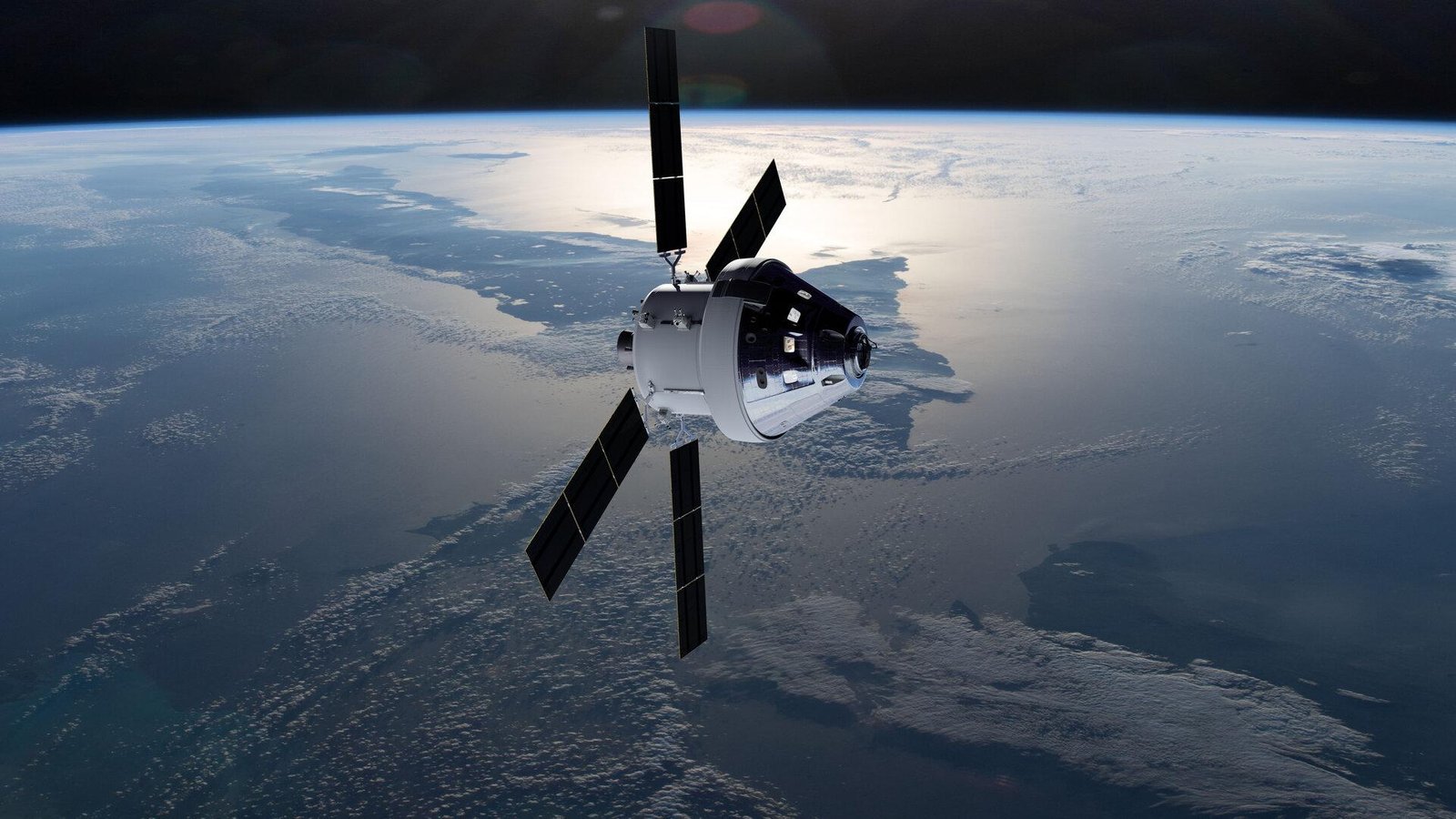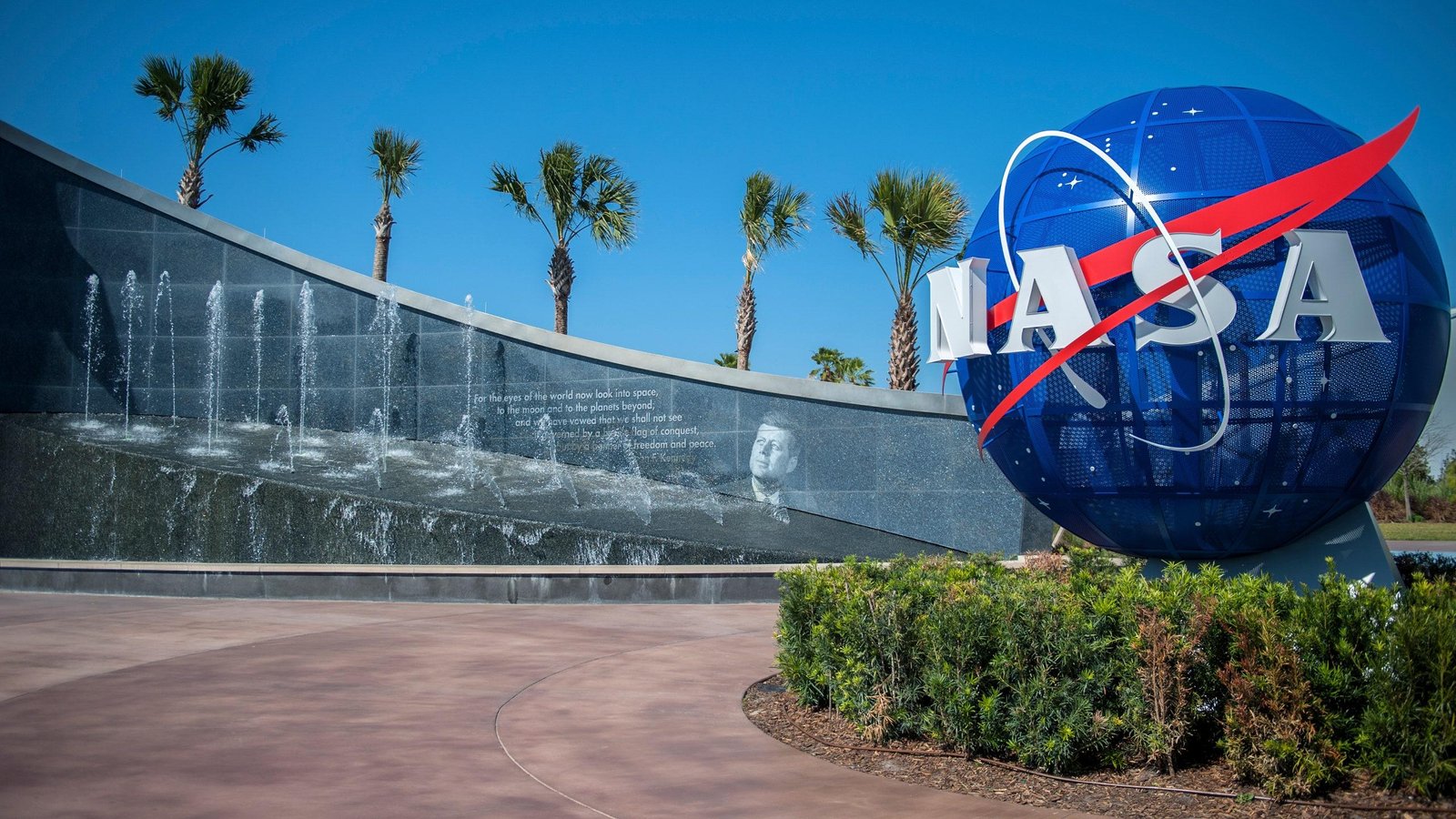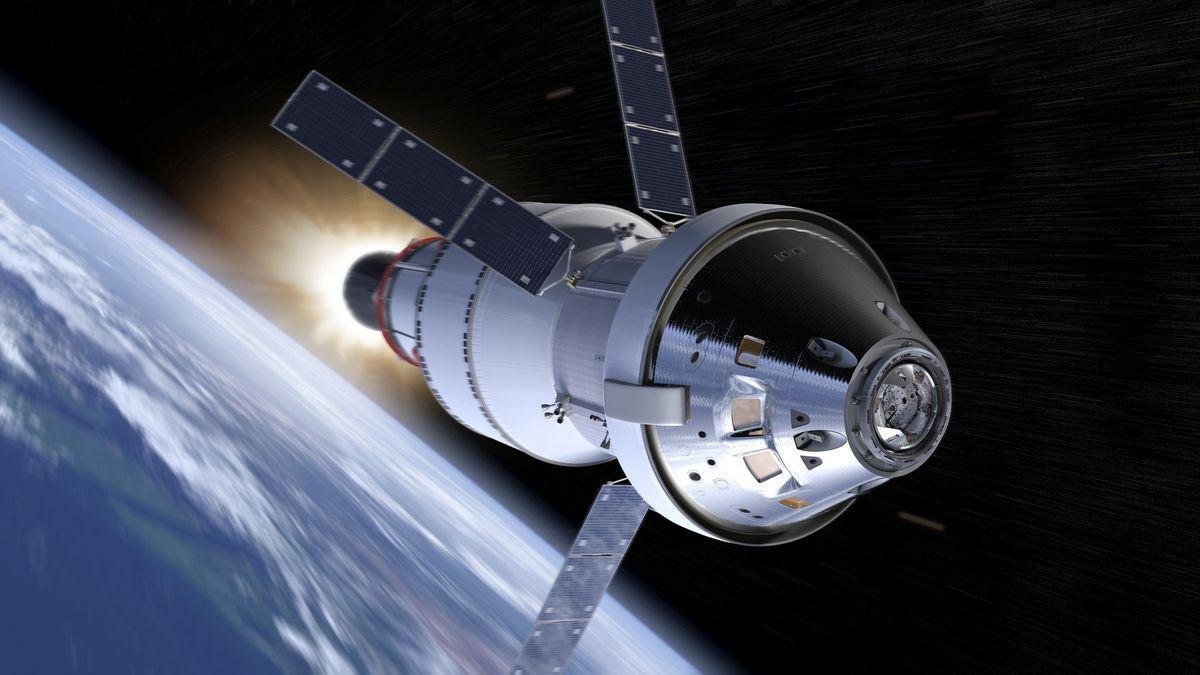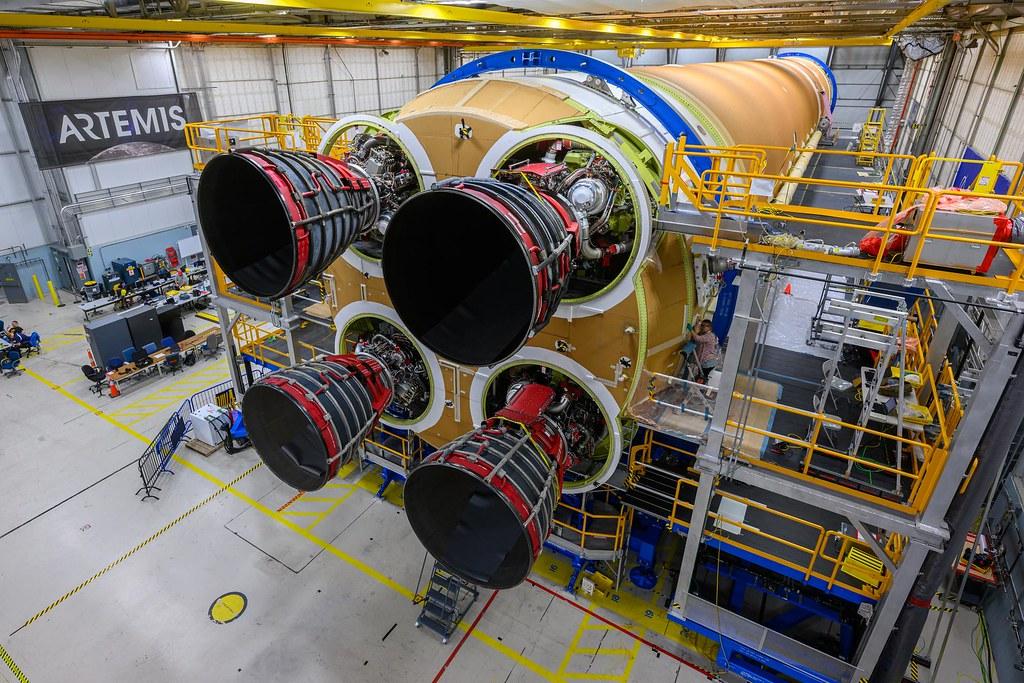PHOTO OF THE DAY: Artemis II Core Stage Arrives at NASA’s Kennedy Space Center
In a monumental step toward humanity’s next great leap into space, the Artemis II core stage has landed at NASA’s Kennedy Space Center, marking a pivotal moment in the agency’s ambitious plan to return to the Moon. This stunning image captures the ambitious spirit of exploration as the hulking structure, a feat of engineering and innovation, prepares for its crucial role in upcoming missions that aim to pave the way for future lunar habitation and beyond. As the space community rallies around this significant development, we take a closer look at the implications of this arrival and what it means for the next chapter of lunar exploration. Join us as we explore not just the visual spectacle, but the story of ingenuity and aspiration that surrounds this iconic moment in aerospace history.
Arriving with Purpose: The Significance of the Artemis II Core Stage Arrival
The arrival of the Artemis II core stage marks a pivotal moment in humanity’s journey to the stars. As this monumental component touches down at NASA’s Kennedy Space Center, it symbolizes not just technological achievement, but a steadfast commitment to exploration and discovery. The core stage, a marvel of engineering, is essential for pushing the boundaries of space travel. It stands ready to support a mission that will pave the way for future lunar and interplanetary exploration, making its presence not just significant, but transformative.
In its journey, the core stage has traveled thousands of miles, overcoming numerous challenges to reach this critical milestone. The implications are vast and varied, resonating through different realms of science, technology, and human spirit. Among the numerous benefits expected from this ambitious endeavor are:
- Technological Innovation: New advancements in engineering and materials science.
- Scientific Discoveries: Enhanced understanding of our solar system.
- Inspiration: A new generation motivated to pursue careers in STEM.
This core stage is more than just hardware; it embodies the dreams and aspirations of countless individuals who envision a future where humanity thrives beyond Earth. As we anticipate the Artemis II mission, the potential for groundbreaking achievements in our exploration of space is more tangible than ever.

Behind the Scenes: Transportation and Assembly Insights at Kennedy Space Center
The arrival of the Artemis II Core Stage at NASA’s Kennedy Space Center marks a pivotal moment in the journey to return humans to the Moon. Behind the scenes, an intricate dance of logistics, engineering, and timing comes into play. Key activities included:
- Specialized Transport Vehicles: Custom-built transporters designed for heavy payloads safely delivered the core stage to the facility.
- Meticulous Planning: Every aspect, from route selection to timing, was carefully coordinated to avoid disruptions and ensure safety.
- Collaborative Efforts: Engineers and transport teams worked closely to prepare the payload and manage on-ground operations during unloading.
As the core stage is positioned for assembly, teams are gearing up for the subsequent phases of integration. Precision is crucial during this phase of assembly, as each element must be aligned with the utmost accuracy. Vital considerations include:
- Component Inspection: Each section of the core stage undergoes rigorous checks to ensure readiness for ascent.
- Environmental Controls: Maintaining optimal conditions is essential for safeguarding sensitive equipment during assembly.
- Synchronized Operations: Different teams must work in harmony to ensure a seamless transition from arrival to assembly.

Preparing for the Future: Key Milestones for Artemis II and Next Steps
The arrival of the Artemis II core stage at NASA’s Kennedy Space Center marks a significant leap toward deeper exploration of the Moon and beyond. As the second mission in NASA’s Artemis program, this critical component will support crewed flight around the lunar surface, paving the way for sustained lunar exploration. The core stage, a marvel of engineering, will undergo rigorous testing in the coming months to ensure its readiness for launch. Key operations will include:
- Integration Testing: Ensuring all systems work together seamlessy.
- Static Fire Tests: Conducting pre-launch engine tests to guarantee performance.
- Final Preparations: Completing necessary adjustments and configuring the flight plan.
Looking ahead, the Artemis II mission sets ambitious milestones that will shape the future of lunar travel. The focus will shift to critical path events that include astronaut training, mission simulations, and refining the spacecraft’s trajectory around the Moon. It is a collaborative effort that involves scientists, engineers, and astronauts from various backgrounds, enhancing international partnerships aimed at deeper space exploration. Here’s an overview of the upcoming key events:
| Milestone | Timeline |
|---|---|
| Crew Training Commences | 2024 Q1 |
| System Integration Complete | 2024 Q2 |
| Launch Window Opens | 2025 |

Engaging the Community: Opportunities for Public Involvement and Education
The arrival of the Artemis II core stage at NASA’s Kennedy Space Center marks a pivotal moment not only in space exploration but also in community engagement. Visitors, educators, and students have a unique opportunity to get involved through various programs that facilitate deeper understanding of aerospace technology and its implications for our future. Public tours, interactive exhibits, and educational workshops will be available to ensure that everyone can learn about the groundbreaking work being conducted to expand our presence in space.
Local residents can also participate in outreach initiatives aimed at inspiring the next generation of scientists, engineers, and explorers. Consider joining community discussions or attending events where experts share their insights and answer questions regarding the Artemis program and beyond. Here are some ways you can engage with NASA’s work:
- Attend Open Houses: Discover behind-the-scenes operations and see new technologies firsthand.
- Volunteer Opportunities: Help at local science fairs or mentoring programs aimed at inspiring youth.
- Public Lectures: Hear directly from engineers and scientists about their experiences and the future of space travel.
| Event | Date | Location |
|---|---|---|
| Artemis Community Day | March 15, 2024 | Kennedy Space Center Visitor Complex |
| STEM Workshops | April 10-12, 2024 | Local Schools |
| Nasa Talks | May 5, 2024 | Virtual Webinar |
Q&A
Q&A: PHOTO OF THE DAY – Artemis II Core Stage Arrives at NASA’s Kennedy Space Center
Q1: What is the significance of the Artemis II Core Stage’s arrival at NASA’s Kennedy Space Center?
A1: The arrival of the Artemis II Core Stage marks a pivotal milestone in NASA’s Artemis program, which aims to return humans to the Moon and eventually pave the way for missions to Mars. This Core Stage is the largest and most powerful rocket stage ever built, signifying advanced capabilities for deep space exploration.
Q2: What features distinguish the Artemis II Core Stage from previous stages?
A2: The Artemis II Core Stage boasts enhanced propulsion systems, improved structural integrity, and advanced avionics, enabling it to carry astronauts beyond low Earth orbit. Its four powerful RS-25 engines are capable of producing over 2 million pounds of thrust, a crucial element for lifting the spacecraft off the ground and into orbit.
Q3: What can we expect next after the Core Stage’s arrival at the Kennedy Space Center?
A3: Following its arrival, the Core Stage will undergo a series of tests and preparations, including integration with the Space Launch System (SLS) and Orion spacecraft. The testing phase will ensure all systems function optimally, with a goal set for Artemis II to launch as early as 2024, featuring a crewed mission around the Moon.
Q4: Why is the Artemis II mission a critical step for NASA?
A4: Artemis II is NASA’s first crewed mission in the Artemis program, making it a vital step for both testing the capabilities of the SLS and preparing for longer-duration missions in deep space. Successful execution will validate technologies and processes that are essential for future lunar landings and eventual missions to Mars.
Q5: How do visuals, like the PHOTO OF THE DAY, enhance public engagement with NASA’s missions?
A5: Visuals, such as the PHOTO OF THE DAY showcasing the Core Stage, serve as a compelling narrative tool that captures the imagination and fosters public interest. They bring the complexities of space exploration to life, enabling audiences to connect with the achievements and advancements of NASA while inspiring future generations of scientists and engineers.
Q6: Where can the public find more information about the Artemis program and its milestones?
A6: For more information about the Artemis program, including upcoming missions, milestones, and educational resources, the public can visit NASA’s official website at www.nasa.gov/artemis. Social media channels and NASA’s YouTube page also provide regular updates and engaging content related to the program and its progress.
In Retrospect
As the dawn breaks over NASA’s Kennedy Space Center, the arrival of the Artemis II core stage heralds a new chapter in humanity’s quest to explore the cosmos. This monumental milestone not only symbolizes our technological prowess but also our collective aspiration to reach beyond our earthly bounds. With each bolt and weld that forms this ambitious spacecraft, we inch closer to the stars, inviting a future where lunar footprints pave the way for Martian dreams. As engineers and scientists work tirelessly to prepare for the next phase of exploration, we are reminded that these moments—like the photo of the day—capture not just machinery, but a vision of hope and discovery that resonates with us all. Keep your eyes on the skies, for the journey has only just begun.

